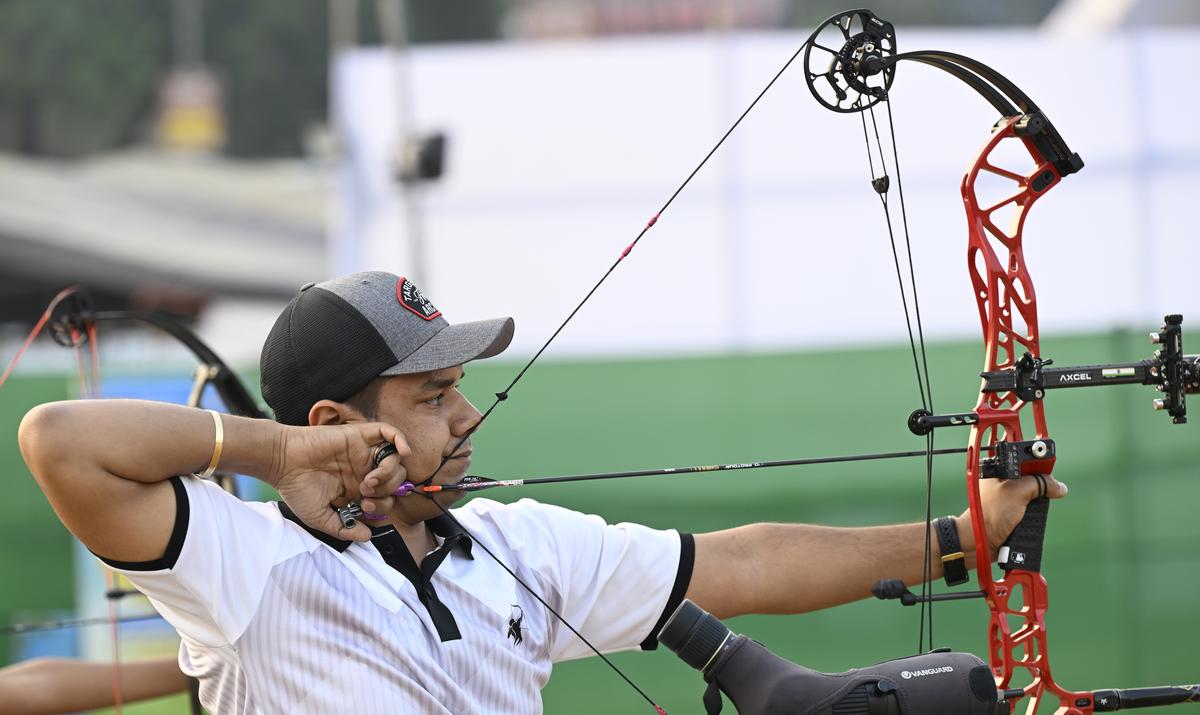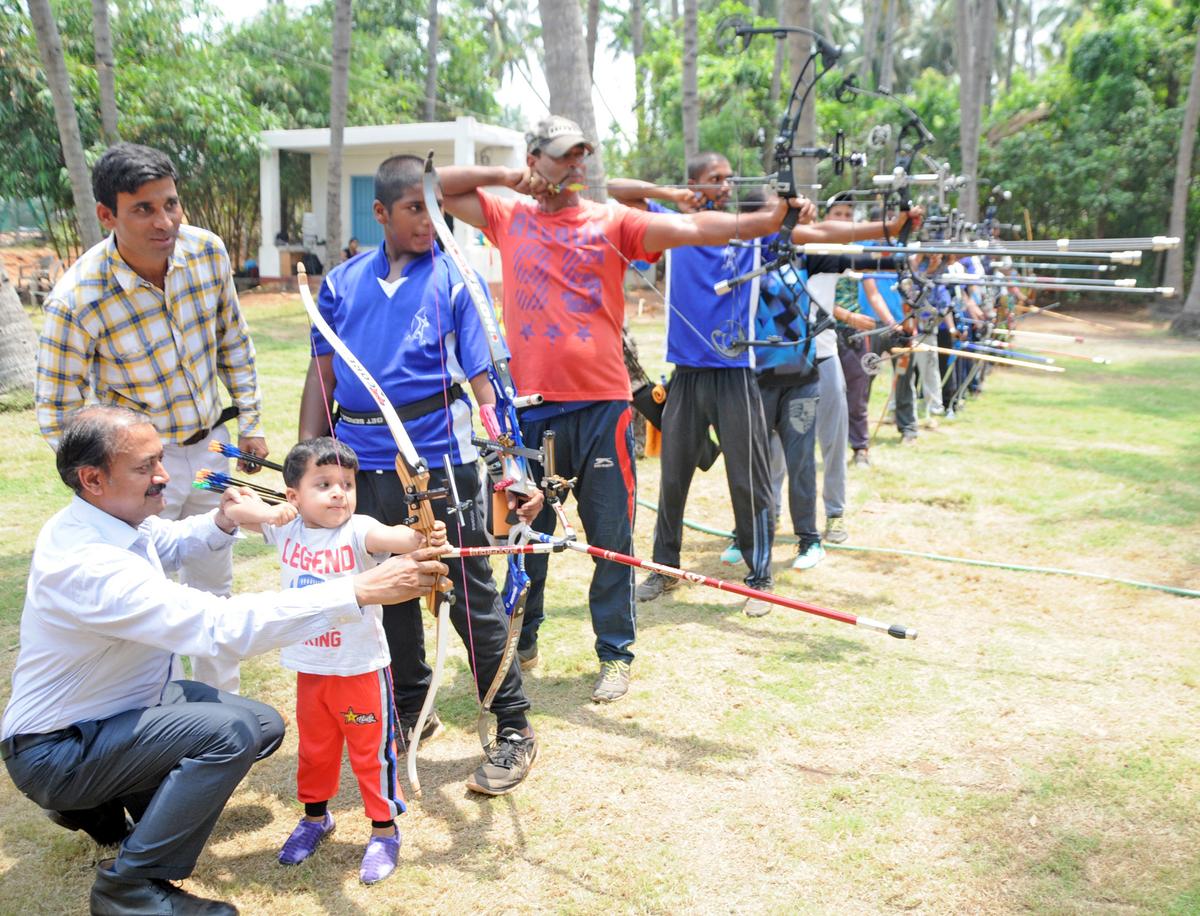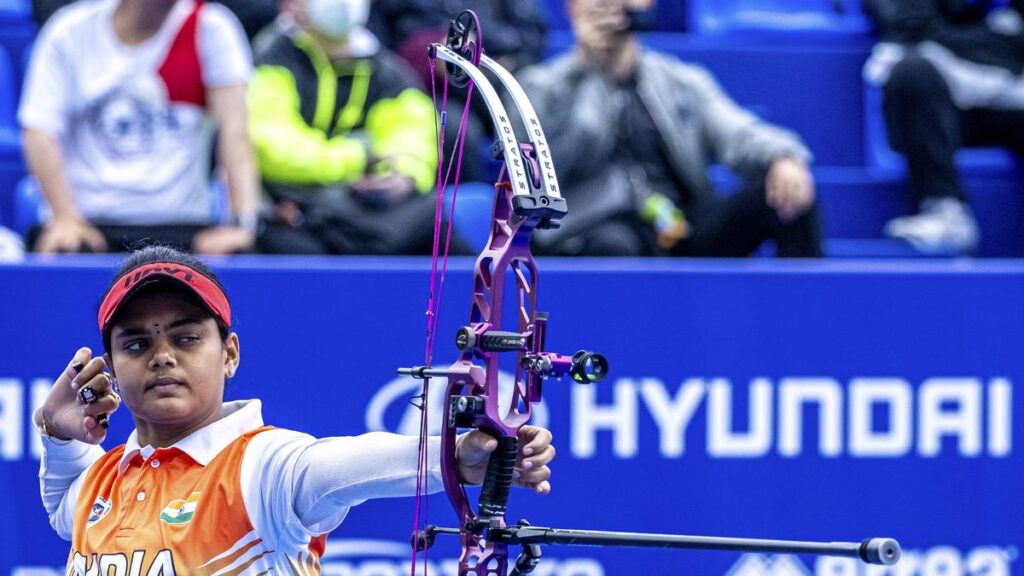After women’s boxing in 2012, India rejoiced at the inclusion of a discipline in the Olympics when compound archery received the green signal for its debut in Los Angeles 2028.
The reason for this joy was the country’s superb track record in the bow style, with medals at the World Championships, World Cups and Asian Games, and the consequent hope that this excellence could translate into an Olympics podium finish.
In recurve archery, which began its formal journey in India with the formation of the Archery Association of India (AAI) in 1973, a year after the sport was re-included in the Olympics, the country has bagged four medals in the World Championships.
In the compound discipline, in which the first National championships was conducted in 2004 — 19 years after the International Archery Federation (now World Archery) introduced the World Championships in the bow style — Indians have collected 11 Worlds medals.
Of late, their success has been phenomenal. They claimed three gold (men’s and women’s individual, women’s team) and a bronze to make history at the 2023 World Championships in Berlin, topping the medals tally for the first-ever time.
In the Asian Games too, Indian compound archers have medalled consistently.
According to Arjuna and Dronacharya awards winner Sanjeeva Singh, one of the few who backed compound archery in the early 2000s, the bow style is the primary reason behind Indians’ success in the discipline.
“Good height and a particular body structure help a recurve archer. You also need power. Different archers use bows of different poundage,” said Sanjeeva, a former high performance director of the Indian team.
“The compound bow is good for people with shorter height. So, it suits Indians. The upper limit is 60 pounds for bows. But the force required to draw reduces significantly due to the let-off, making it a level playing field.”
Compound vs. recurve explained
For the uninitiated, the recurve bow is a modern form of the traditional one. “The energy stored in the bent limbs transfers through the string into the arrow, sending it downrange to the target. Drawing a competitive recurve bow can require more than 20kg of force, and an arrow shot from a recurve bow can travel at speeds of over 200kmph,” explains World Archery.

Aiming high: Worlds and Asian Games medallist Abhishek Verma is optimistic of India’s chances in Los Angeles. ‘Several countries are strong either in men’s or women’s team events, but we are good in both,’ he says. | Photo credit: R . Ragu
The compound bow, invented in the USA in the 1960s, is a mechanised equipment using a levering system of pulleys and cables. It works faster and is more accurate.
“An archer shooting a compound bow pulls the string back to the mechanical stop using a release aid, with the strength required to draw the bow decreasing. The archer aims at the target through a magnified scope and activates his release aid to detach it from the string. The energy stored in the bent limbs and cables transfers into the arrow, sending it downrange to the target. Drawing a competitive compound bow can require up to 28kg of force, although at full draw the holding weight can be as little as 6kg, and an arrow shot from a compound bow can travel at speeds of over 350kmph,” the WA explainer says.
Compound archery, with its growing popularity, was included in the World Games in 2013 and the Asian Games in 2014. It also became a part of the continental Games in the Americas, Europe and the Pacific.
The archery community was disappointed when compound could not make it to the LA 2028 programme last October. Finally, when the lone compound mixed team event joined five existing recurve events — men’s and women’s individual and team and mixed team — in the Olympics last month, it brought delight and relief.
The news raised medal hopes for India, which, despite producing several top recurve archers such as Deepika Kumari, Atanu Das, Tarundeep Rai and B. Dhiraj, has not been able to open its account in the Olympics. The best performance came in Paris 2024, where Dhiraj and Ankita Bhakat lost the mixed team bronze medal match and finished fourth.
Compound star V. Jyothi Surekha — India’s most decorated archer who has won medals in the World Championships, Asian Games, World Cup and World Games but has been fighting a legal battle after not being considered for the prestigious Major Dhyan Chand Khel Ratna Award — hopes that the development will ensure fair treatment for practitioners of the bow style.
The moment to shine
“We were waiting so long for this moment. Now our responsibility has increased,” said Jyothi, who was competing in the first leg of the World Cup in Florida when the news broke.
“The scenario will change in a positive way. Now funds from the Government, private and non-profit organisations can be utilised for training. The awards and support will be better.”

Nature and nurture: Dronacharya awardee Sanjeeva Singh (left) believes the compound bow ‘suits Indians’ because it works well in the hands of ‘people with shorter height’. He prescribes a development programme with scientific support for consistent Olympic success. | Photo credit: T. Singaravelou
Noticeably, things have improved. Seven top compound archers (Jyothi, Aditi Swami, Parneet Kaur, Abhishek Verma, Priyansh, Ojas Deotale, Prathamesh Jawkar) have been inducted into the Target Olympic Podium Scheme (TOPS).
“I notice encouraging signs as new kids are showing interest in compound archery,” said Pravin Sawant, the personal coach of Aditi and Ojas.
Jyothi sounded serious about the Olympics. “Three years is a long time. We need to maintain and improve our performance. We have been winning medals everywhere, that’s a good sign. But it will get tougher.”
Abhishek Verma, another Worlds and Asian Games medallist, is optimistic. “We are yet to know about the competition format and qualification details. Still, India has a good chance as we are World No. 1 in the mixed team event. Several countries are strong either in men’s or women’s team events, but we are good in both [World No. 1 and 3 in women’s and men’s teams respectively],” said Abhishek.
For Abhishek and Jyothi, who have tasted success as a mixed team, the camaraderie between the partners is a key element.
“There needs to be trust and bonding. For example, I and Jyothi have trained and competed so much that we know each other’s game and mindset well. When there is good bonding, you know how your partner is feeling and make some strategic calls — such as changing the sequence of shooting or giving a pep talk,” elaborated Abhishek.
He shared an anecdote to underscore his point. “During a mixed team match in the 2017 Asian Championships, I lost my release aid. Since I always guided her and was familiar with her equipment, I used her release aid without any problem.”
A grievance amid good tidings
With hopes for a better future, Abhishek highlighted a grievance. “Like Jyothi, many of us have been fighting for what we deserve. As for Jyothi, how many athletes across disciplines have bagged eight medals in the World Championships?”
For a good build-up to the Olympics, Abhishek feels entering more competitions, building bench-strength and preparing a core group of archers are necessary ingredients.
Sanjeeva recommends comprehensive grass-roots development with scientific support to achieve a long-term and sustainable goal of excelling in the Olympics.
Amid good tidings, the AAI and the Sports Ministry need to support Indian compound archers pragmatically and help them shine in LA28 and the Games beyond.
Published – May 09, 2025 11:11 pm IST

